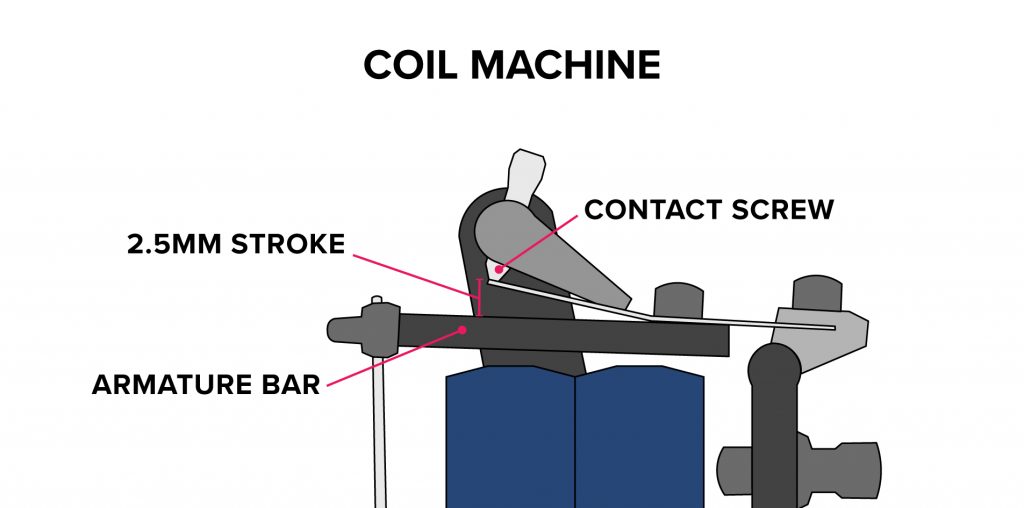
Stroke length is important for all basic tattooing techniques: lining, shading, and packing. But you may have asked yourself, “What the hell is it, exactly?”
Also known as “throw,” stroke (or stroke length) is sometimes confused for needle depth. So, let’s clarify. For starters, stroke length has two (2) different definitions. It all depends on the kind of tattoo machine you’re using.
For coil machines, stroke length is the distance the armature bar travels before it strikes your needle.
For rotary machines, stroke length is the amount of travel your cam wheel (or stroke wheel) makes around its bearing in one rotation.
Stroke affects three key factors:
- How hard your machine hits
- How fast your needle moves
- Your max needle depth
So, what’s tattoo needle depth?
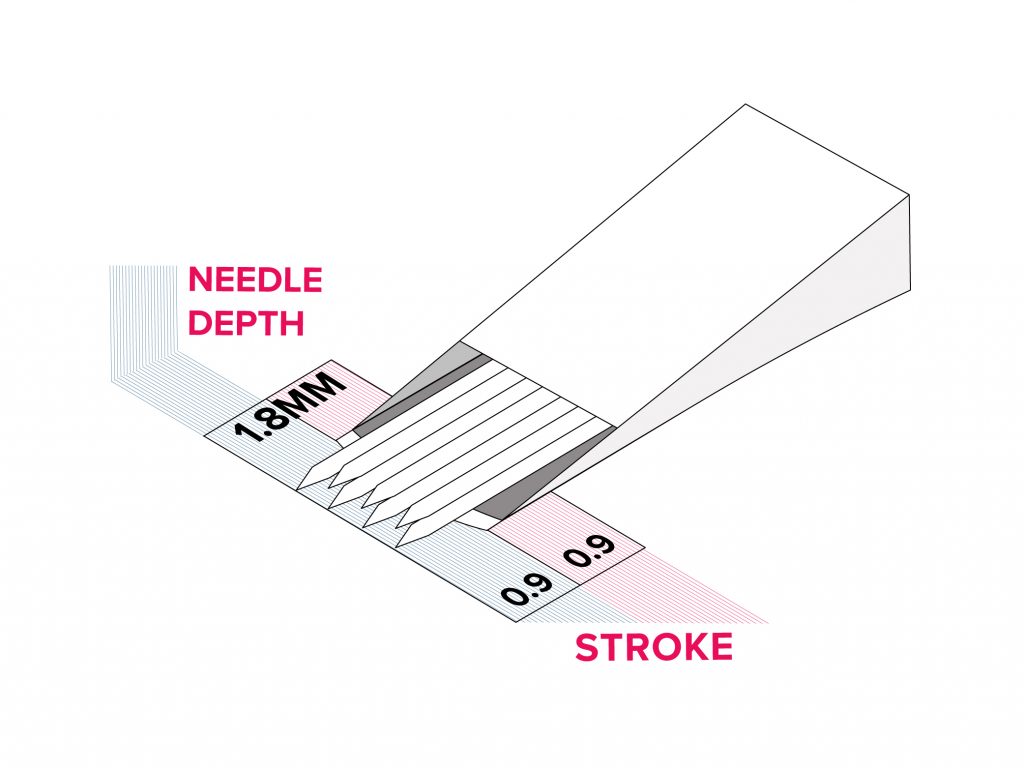
Needle depth refers to how far your tattoo needles stick out of your tube or cartridge tip. In fact, the longer your needle depth is, the longer your stroke length must be. See how the two get confused? They’re very closely related.
That’s because the stroke length affects how far your needles retract into your tube tip or cartridge reservoir, where they pick up more tattoo ink. So, if your needle depth is long and your stroke length is too short, your needles won’t be able to retract far enough to pick up more tattoo ink. The result? Patchy tattoos.
Now that we’ve covered what stroke length is, we’ll get to the good stuff. Check out how different stroke lengths are used in tattooing.
When to Use Different Stroke Lengths
There are three distinct stroke lengths: short, medium, and long. Typically, they’re used for different tattoo techniques and styles. Oftentimes, tattoo artists use multiple stroke lengths during one tattoo session for lining, shading, blending, packing, and more.
Short Stroke Length: 1.8mm up to 2.5mm
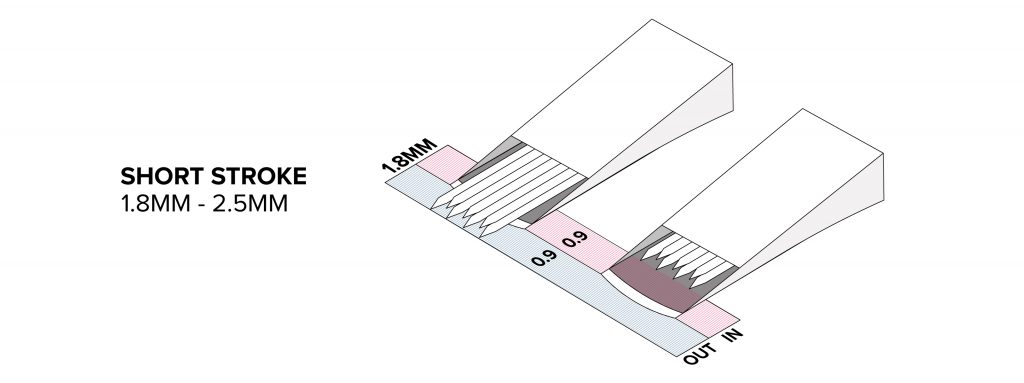
Tattooing with a short stroke length means your needles are going to move faster, since they have less distance to travel and retract; but despite their speed, your needles will hit softly. That means you’ll cause less trauma to your client’s skin, so you can safely perform multiple passes.
Consequently, short strokes are perfect for soft shading and blending work. Tattoo artists who specialize in hyperrealism and black & grey count on soft stroke lengths a lot to get those smooth, seamless blends. Most tattoo machines with stroke lengths under 2.5mm are designed for permanent makeup. But some tattoo machines like the FK Irons EXO come in a variety of fixed stroke length options, including short strokes like 2.5mm, according to your needs.
Reminder: If you’re working with a short stroke length, your needle depth also must be short. You want to make sure your needles are retracting enough to pick up tattoo ink from your tube tip or cartridge reservoir.
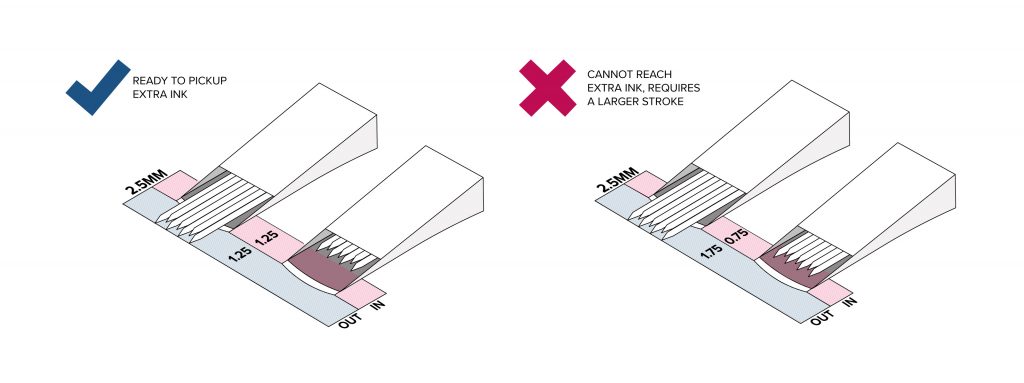
Medium Stroke Length: 3.5mm
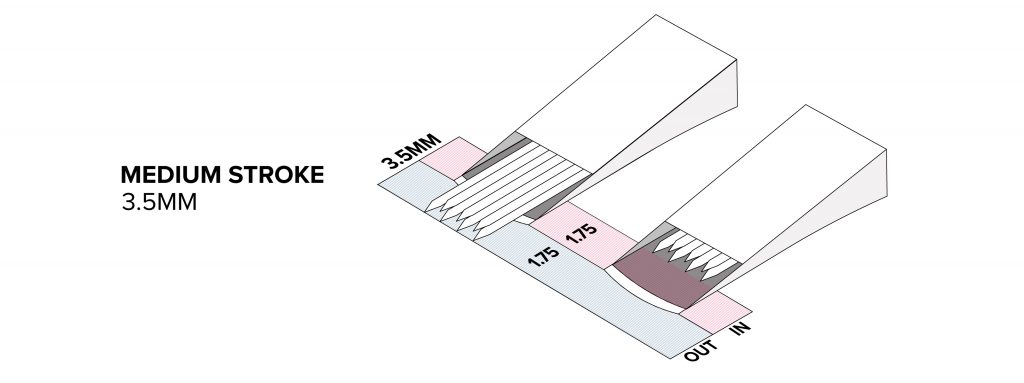
A good, reliable medium stroke length is a tattoo beginner’s best friend. That’s because medium stroke lengths can perform a little bit of everything. It’s most commonly used for color packing and shading.
You’ll find a lot of all-rounder machines with fixed 3.5mm strokes. With a middle-grade speed, hit, and retraction, it’s got a good, reliable amount of momentum for most tattooing. Tattoo machines like the Vlad Blad Ultron C Pen have a fixed 3.5mm stroke for a wide variety of styles. Also, the ever-popular FK Irons Spektra Xion is considered a medium stroke machine, including 3.7mm and 3.2mm interchangeable cam wheels.
But you’re not going to pull your boldest, crispiest lines with a medium stroke. A single-pass line with a medium stroke usually won’t cut it if you’re trying to tattoo at your boldest. That’s largely because a medium stroke length can handle working with smaller needle groupings but will struggle with heavy liners and magnums.
Long Stroke Length: 4.0mm+
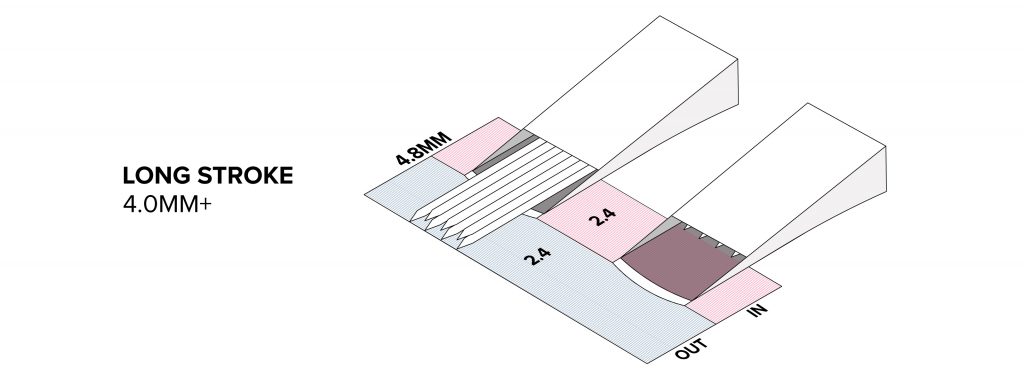
Bold, traditional artists are all about the long stroke. When tattooing with a longer stroke length, your needles will move more slowly, since they have more distance to travel and retract; but they’ll also hit hard, which means they pull the boldest lines in a single pass. Perfect for American Traditional and Neotraditional tattooing, long stroke lengths can also be used for color packing and black and gray shading work when done with a professional, fast hand. When working with a stroke length of 4.0mm and beyond, you’ve got enough momentum and heavy hitting to pack in a lot of ink with one pull. Tattoo artists love the FK Irons Spektra Flux direct-drive wireless tattoo machine for its 4mm stroke.
But this stroke length causes a lot of trauma to your client’s skin. As a result, it’s only recommended for experienced professionals who can expertly pull single-pass lines.
How to Adjust Your Stroke Length
Well, it all depends on your tattoo setup.
Working with coil machines? Adjust your stroke length by turning the contact screw. This increases or decreases the gap where your armature bar travels.
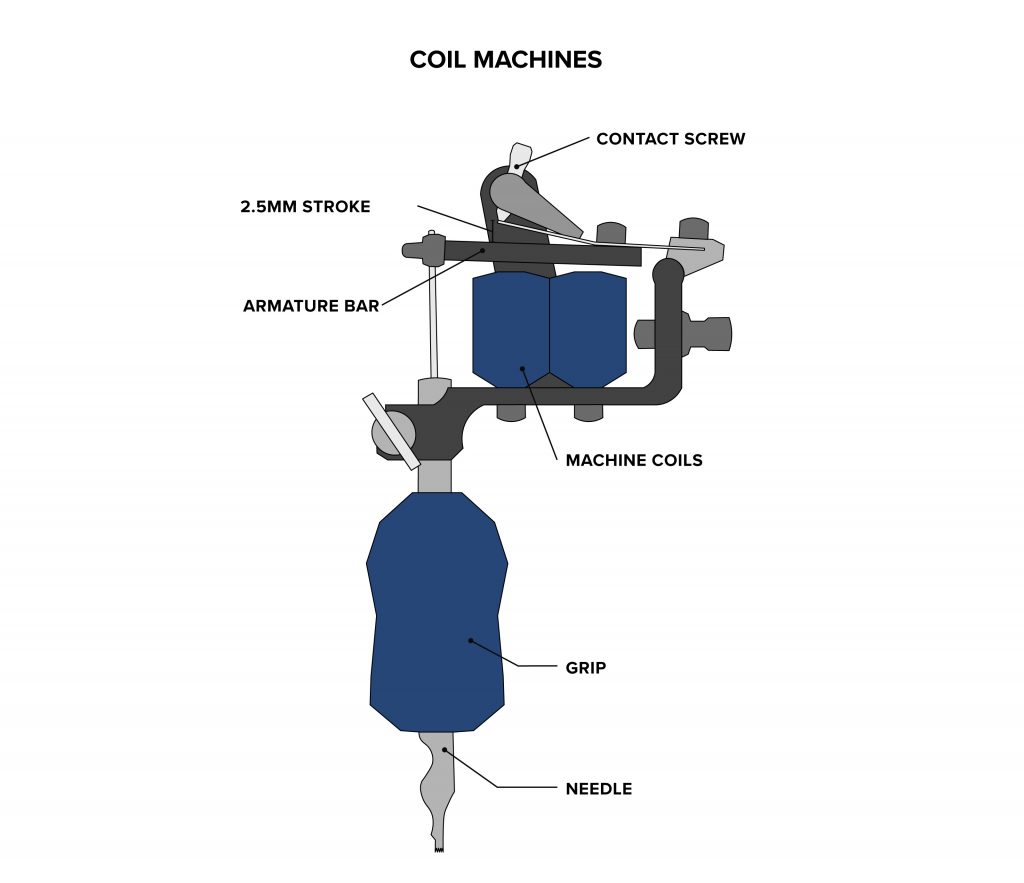
Prefer rotary machines? You can either get yourself a rotary tattoo machine with adjustable stroke, or invest in multiple machines with different fixed stroke lengths.
For instance, machines like the Proteus pen machine by Peak allows you to adjust your stroke length on the fly. This is majorly convenient, because it means you don’t have to switch or re-bag machines mid-session. All you have to do is turn the stroke adjustment knob on the fly, and carry on tattooing at your desired stroke.
However, you might prefer using multiple machines. Manufacturers like Bishop Rotary offer separate liner, shader, and packer tattoo machines for that very purpose. Each has a different stroke length, making it better suited for a specific technique.
Bishop Rotary and other manufacturers like InkJecta also produce rotary machines with interchangeable cam wheels (stroke wheels). So, you can tattoo with the same machine and switch out the cam wheel mid-session to adjust your stroke.
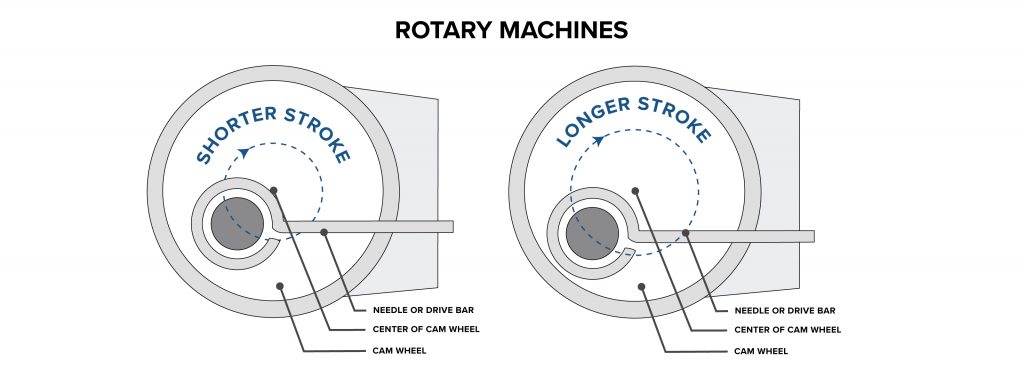
NOTE: When choosing your tattoo machine(s), you’ll also want to think about give. “Give” refers to the bounce-back effect of your needles after striking the skin. All coil tattoo machines naturally have give but rotary tattoo machines typically don’t. That means rotary machines are way less forgiving when you’re working with longer stroke lengths, because the needle doesn’t bounce back in a single pull, resulting in more trauma.
But this is changing as the industry evolves. FK Irons offers Bluetooth-enabled wireless machines and battery packs that allow you to use “eGive” features on the darklab app. This makes rotary machines have give, which can really step up your game.
Put the Basics to Practice
Not only is stroke essential… it’s also personal. Your preferred stroke length(s) will have a lot to do with your own individual style.
Maybe you already know exactly what strokes you prefer, or maybe you’re still getting a feel for your favorite machine and setup. You can explore a wide variety of rotary tattoo machines on our Web store, offering adjustable stroke, fixed stroke, and more. You’ll also find a variety of coil tattoo machines by top manufacturers like HM Tools & Dye, Hatchback, and Vlad Blad.
There’s no “right answer” when it comes to your unique setup. But there’s a right stroke length for every style.


Comments are closed here.